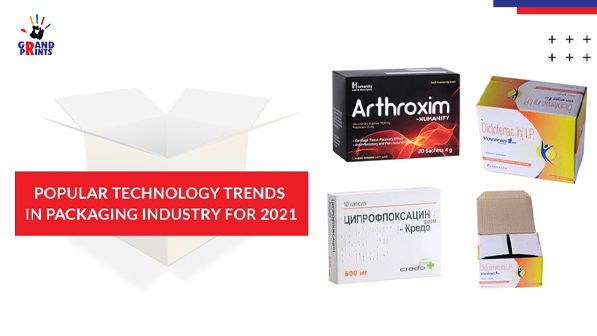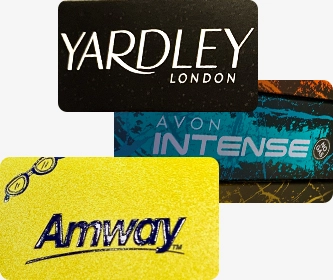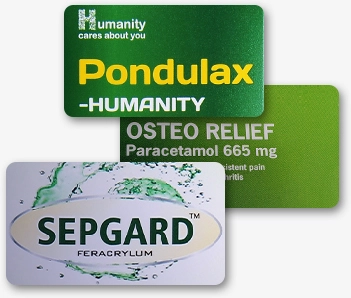Popular technology trends in packaging industry for 2021

Packaging was originally conceptualised and designed to enclose a product in an effort to protect it during transportation and storage. The process of packaging, thus, was involved in designing and manufacturing with appropriate technology where the effort was to package at the lowest price. Over a period of time, packaging started evolving and the focus shifted to other areas such as durability, weight and economy of space.
The realisation that packaging also played a major role in marketing, given the need to be noticed, it started to be referred as the fifth ‘P’ of market mix by some marketers. The environmentalists brought in concepts of sustainability and technology advancements and packaging now looks at creating designs which incorporate features that are holistic.
The fact here is that Packaging is one of the most important functions and generates huge employment and engages professionals from engineers to chemists, marketing to production, etc.
As the rigour of the pandemic that started in 2020 and now moves into 2021, corporates have to be agile in their approach. Packaging has to match up to the demands of rapidly changing environments through innovation and technology.
Through 2021, it would be important to stay on top of all the latest packaging trends and technology advancements that may be game changers for businesses and suppliers.
Emerging Trends
Going Digital- Print on-demand- is one of the fastest emerging trends in packaging. The new generation of digital presses offer a host of advantages like better print quality, colour registration and consistency, economy in shorter runs, besides boosting production.
Digital printing offers advantages in production flexibility, personalization, and faster turnaround times. It therefore is finding greater acceptability with brand managers and packaging services. Inkjet printers and Toner printers will continue to find greater use in packaging particularly label printing with their flexibility of use. Besides, the latest digital presses are capable of printing on a large variety of substrates, thereby enhancing the scope of packaging. Operationally, the flexibility to be able to integrate in existing workflow systems makes this technology the future in packaging.
Vanishing Packaging- Sustainable packaging is assuming greater priority for consumers and hence, brand managers are now looking at this area with increasing interest. The younger generation, now, looks at ‘eco-friendly packaging’ as a major driver in purchase decisions. Corporates thus now want to be socially and environmentally responsible in an effort to cater to this aware and rapidly growing segment. Sustainable packaging thrives creating a circular system based on recycled raw materials, reduction in production processes and reusable final products.
The new generation of packaging designers, however, are looking at the future with a step that transcends the conventional definitions of ‘eco-friendly packaging’. They are now innovating by creating materials that dissolve on coming in contact with water. This will be a new frontier in cutting down on waste management and will not only avoid garbage dumps but disappear completely. Dissolvable packaging is a material that looks like plastic but dissolves in water and has no harmful residuals. Shopping, garment and laundry bags, for instance, are increasingly being made with a film that can be dissolved in water. One of the main ingredients in this film is polyvinyl alcohol, a synthetic polymer that is water soluble, biodegradable and leaves no residue. Similarly, natural materials like starch and corn are being increasingly used in creating packaging for edible products and dissolve almost immediately on soaking and without any residue or emissions. With safety being of paramount importance as the pandemic rages, this technology is here to stay.
Nanotechnology in Packaging- Use of Nanotechnology is increasing rapidly in packaging especially in the food and pharmaceutical industry. Nanotechnology is the science of using very small particles such as silver nanoparticle, titanium nitride nanoparticle, and nano-titanium dioxide, nano-zinc oxide, etc.
In a huge market of counterfeit drugs of around $75 billion, the need for technologies to prevent counterfeiting and propagating authentication is enormous. Nanotechnology, in pharmaceutical packaging, fights counterfeiters through placing nano barcodes on packaging. This technology also helps tracking and tracing consignments to prevent their unauthorised distribution.
Similarly, in food packaging, nanotechnology will continue to find greater acceptance in improvement of packaging, creating active and smart packaging solutions. Use of Nanotechnology will increase the shelf life of food products. Intelligent food packaging is capable of providing information on the state of the food inside, through the use of nanosensors. The application of this technology can increase the shelf life of foods, reduce spoilage, ensure food safety and even repair the tears in packaging.
3D packaging- 3D printing or additive manufacturing is a technology process in which layers of material are deposited one on the other under computer control. These layers of objects are produced from electronic data sources for precision.
3D packaging has evolved in the recent past as production lines get add on jigs to build on flat designs. 3D packaging also can be developed through dedicated specialised machines designed to create the total effect. This type of packaging allows brands and designers to be creative and make the packaging eye-catchy and interactive.
3D printing holds great promise for the times to come as we go through the raging pandemic and uncertain future. 3D printing finds some amazing applications in several fields and packaging is not far behind. As hygiene concerns abound, consumers look to packaging with new perspectives like single use packaging. Since packaging is having an increased impact on brand image and purchase decisions, companies are beginning to invest in 3D designs. With 3-D printers gaining in popularity, 3-D printing is now no more a process that appears over the top and futuristic.
3D technological advances and integration with computers will increasingly bring more complex designs to life and help products stand out in a crowded shelf, or simply make the unboxing experience a memorable one.
To Conclude
Tech-integrated packaging will continue to be in focus going forward as brand image will be increasingly important for businesses. Packaging will continue to be an essential part of a customer’s perception and experience with the brand. To keep abreast of trends, adoption of technological innovations is going to be key for corporate and package service providers to survive in this challenging scenario.
Grand Prints began their journey decades ago, focusing on redefining the excellence of a printing press by continuously delivering high quality service to its clients. It later specialized and evolved as one of the best printing service providers, especially for the pharmaceutical companies. Get a peek into Grand Print’s comprehensive solutions for pharmaceutical printing and carton packaging.


